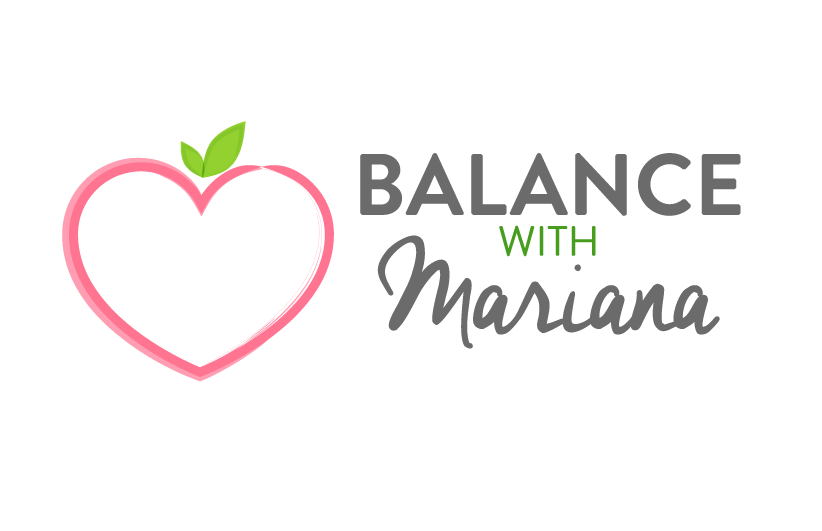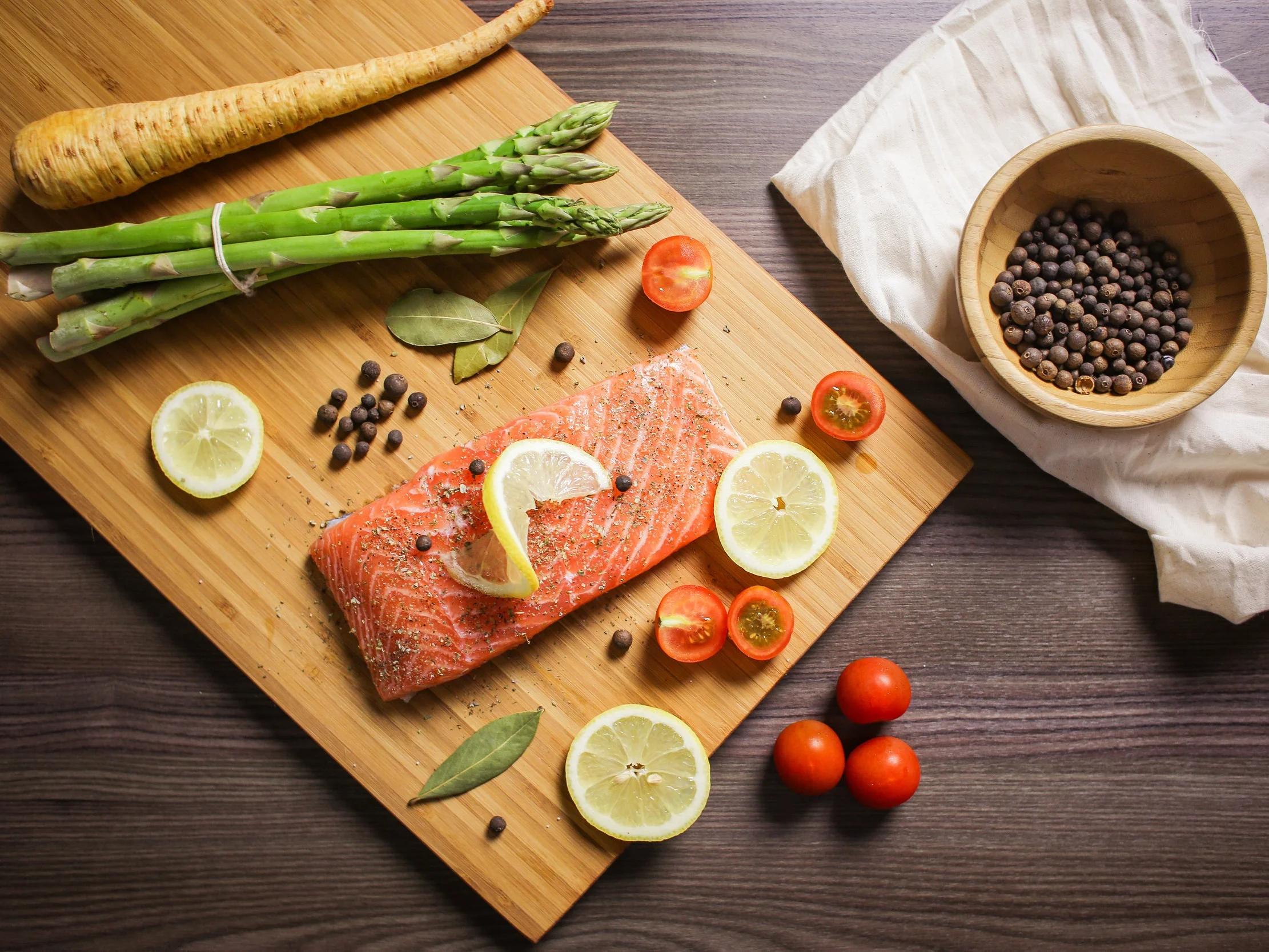I’m guessing you’ve heard of both the “Paleo” and the “Keto” diets by now, as they have been all the rage over the past few years. And for a good reason; they both have some underlying principles that are extremely beneficial for almost anyone, and have worked miracles for many.
For starters, what are 2 of their shared underlying principles that I love? Both Paleo & Keto diets advocate to: 1) eliminate refined carbs. 2) More generally, eliminate overly processed food.
The concept of sticking to real, WHOLE foods and limiting foods that come in packages, especially those with multiple ingredients, is a MUST (in my view) for everyone to follow. It’s essential to your roadmap to better health.
Both Keto and Paleo also place emphasis on having protein and healthy fats at each meal, and limiting carbohydrates overall, especially refined carbohydrates – which are also concepts that I agree with and believe support a healthy, balanced diet (with Keto being a lot more strict than Paleo, more below…).
NOTE: I am a huge fan of having carbs at each meal, BUT carbs coming primarily from VEGETABLES - very different from what most people think of when it comes to carbs!
Before we dig deeper into Paleo vs. Keto, I want to stress: you can apply PRINCIPLES of both these awesome diets into your day-to-day, and tailor your way of eating to include these principles WITHOUT having to adhere to the diet 100% and feel that you’re on a “diet.” (That being said, in the case of Keto, if you want the full benefits, you need to ensure that your body goes into Ketosis; however there are still ways to achieve this while modifying the diet to your specific needs).
Each person is different and it’s important to honor what works for YOU, what supports your gut/digestion, your energy, your hormones and your unique body, versus focusing solely on following a mass diet. Applying some degree of “Intuitive Eating” is crucial regardless of which diet you are following. You should aim to have a long-term sustainable way of eating that keeps you happy and not stressing about food, portions, calories, what you have to avoid, etc.
Keeping that in mind, I’ll now share in more detail some principles of both Paleo and Keto, so you can take what you’d like from each of these diets, and apply them mindfully to your diet, if you wish.
PALEO
The Paleo diet is based on the theory that we should eat like our paleolithic / hunter-gatherer ancestors and emphasizes eating lots of nutrient-dense foods, no modern convenience packaged goods.
INCLUDES:
“clean” animal protein (including all types of meats - preferably grass-fed, poultry - preferably organic, fish and seafood - preferably wild)
eggs (preferably organic)
vegetables and fruits (it permits ALL veggies/fruits, with emphasis on low-starch veggies)
healthy fats including: nuts, seeds, and unrefined healthy oils (no limits)
allows for small amounts of natural sweeteners such as raw honey
EXCLUDES:
processed, packaged foods
gluten and all grains (including gluten-free ones such as oats and rice) *some also exclude “grain-like seeds such as quinoa, millet, etc.
legumes (beans, including lentils, chickpeas, all variety of beans and even peanuts)
dairy
refined sugars, alcohol, refined oils and essentially all highly processed foods.
KETO
While ketogenic diet (known as Keto for short) is a recent fad, it’s actually been used by doctors since the 1920’s to treat epilepsy. The diet emphasizes eating lots of healthy fats, moderate protein and very little carbs, in order to put your body into the metabolic state called nutritional ketosis. While in ketosis, your body creates compounds called ketones and burns fat, both your own body fat and fat from your diet, for energy rather than glucose.
In order to get into ketosis and stay there, you need to drastically reduce your carbohydrate intake, and make sure you get enough healthy fats, as well as some protein, and only low-carb veggies.
INCLUDES:
all animal protein including fish, seafood, poultry, red meat, and eggs
low-starch veggies
small amounts of low-sugar fruits including berries, coconut and avocado
naturally full-fat foods (minimally processed) including: full-fat diary, butter, ghee and unrefined oils (including coconut oil, extra virgin olive oil and avocado oil)
small amounts of nuts and seeds
small amounts of low-carb/calorie “natural” sweeteners including erythritol, xylitol, stevia
bone broth, water, coffee and tea *and some allow 1 small glass of wine
EXCLUDES:
all grains and legumes (no rice, oats, quinoa, lentils, chickpeas, beans, ETC)
high starch veggies (no yucca, plantain, beets, carrots, potatoes nor sweet potatoes!)
most fruits (except for berries, coconut, avocado) *and some allow small portions of apples, pears, kiwis and plums as long as you stay below your daily carb intake to maintain ketosis)
all forms of sugar (including foods high in natural sugars) and most sweeteners (no honey, maple syrup nor even coconut sugar allowed)
If you noticed, Keto’s list of WHAT TO EAT & NOT EAT is similar to the Paleo diet, EXCEPT:
Keto allows for high-fat dairy (although its optional and may people are following modified versions of Keto that are dairy free, even vegan)
Keto does not allow for starchy vegetables nor high-sugar fruits (that paleo doesn’t restrict)
Keto does not allow for any natural sweeteners like honey, maple syrup, coconut sugar, etc; only some allow erythritol, xylitol and stevia
Main differences between Paleo and Keto?
Keto is stricter with carbs and sugars (no high-sugar fruits/veggies, no natural sweeteners) and recommends only 20-30g of net carbs daily.
Keto places more emphasis on HIGH FAT & moderate protein vs. Paleo tends to be viewed as more HIGH PROTEIN and moderate fat. Keto diet recommends about 75% of your calories to come from fat.
On the Paleo diet, the goal is not to get into ketosis but simply to eat a healthy, balanced diet.
BENEFITS OF BOTH DIETS:
WEIGHT LOSS
Both Keto and Paleo typically help with weight loss. The keto diet seems to be more effective in terms of promoting fat and weight loss, since ketosis causes fat to be used for energy. That being said, the Paleo diet can also lead to weight loss since it cuts out processed foods and empty calories, while increasing intake of both protein and fat that are satiating.
LOWERING INFLAMMATION
Both diets can have anti-inflammatory effects. The Paleo diet is more popular among people with autoimmune conditions because it eliminates many common allergens, such as dairy and gluten. But the Keto diet has also been said to protect against chronic diseases like Alzheimer’s, diabetes and even cancer as the Ketones (produced during ketosis) have anti-inflammatory effects.
TONING BODY/BUILDING MUSCLE
Both diets can help promote growth of lean muscle mass and to accelerate fat loss. In combination with some resistance-training (I suggest barre/yoga/pilates), it’s definitely possible to stay muscular, lean and fit while on either the Paleo or keto diet.
Conclusión? Both Paleo and Keto have major health benefits, and I highly recommend applying some of the core principles of these “diets” to your way of eating if you’re looking to clean up your diet. But remember, it’s often best to modify the diet to YOUR lifestyle, YOUR body, YOUR needs, and make it a long-term way of eating versus a short-term diet. (Read more HERE on why this works).
Interested in learning more about the Mediterranean Diet? Read here.
Interested in applying some Ayurveda principles to your way of eating? Read here.


